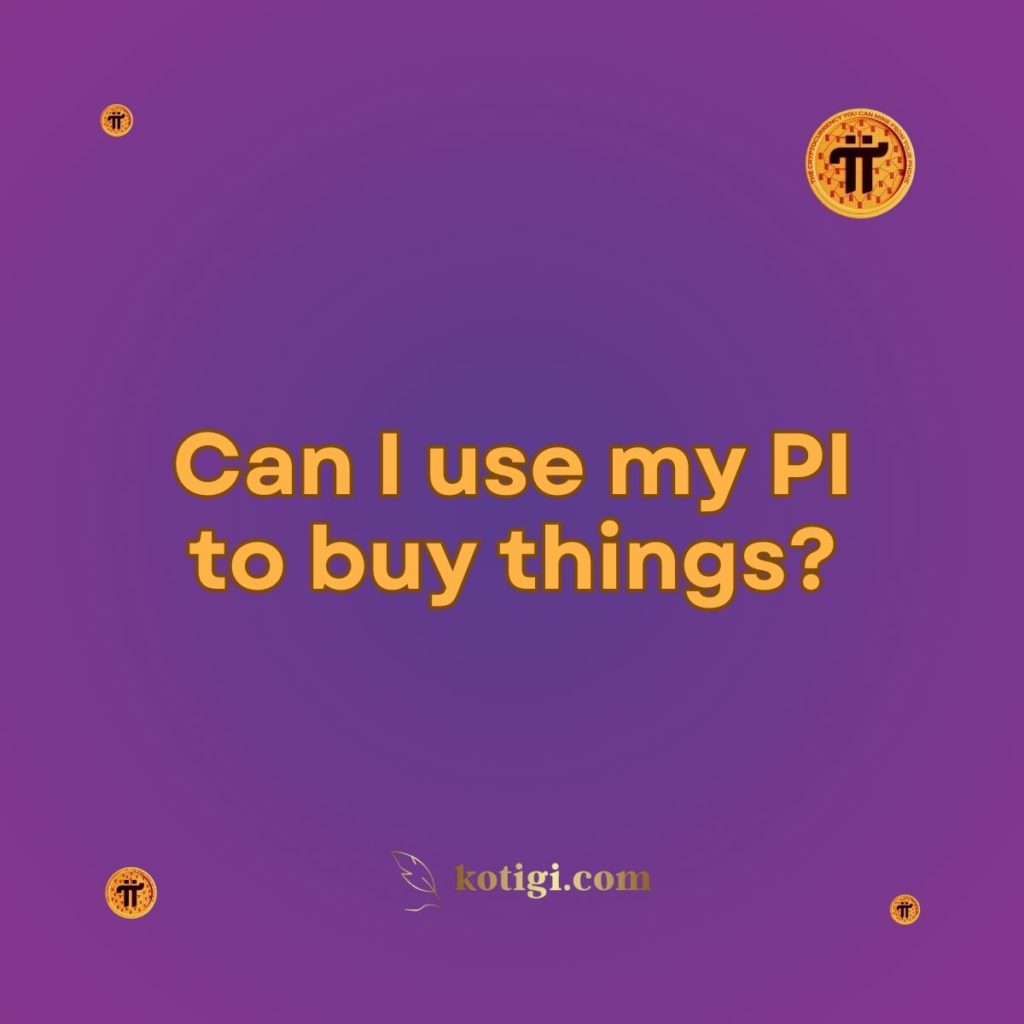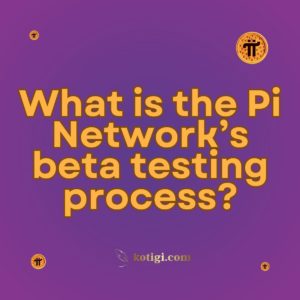
Can I use my PI to buy things?
Yes, Pi Network has been making strides toward becoming a real-world currency. While it’s still in its early stages, several platforms and marketplaces now accept Pi for goods and services. Let’s dive deeper into how Pi is being used and what the future holds for this emerging cryptocurrency.
Introduction
Cryptocurrencies like Bitcoin and Ethereum have revolutionized how we think about money. But with Pi Network, a newer and more accessible cryptocurrency, many users are wondering: Can I use my Pi to buy things? In this post, we’ll explore how Pi can currently be used for purchases, the platforms that accept it, the security of transactions, and the long-term potential of Pi as a practical currency.
What is Pi Network?
Understanding Pi Network’s Concept
Pi Network is a decentralized cryptocurrency designed to be mined from mobile devices. Its mission is to democratize cryptocurrency by allowing everyday people to mine Pi using their smartphones, without the energy-intensive processes associated with Bitcoin or Ethereum mining. Pi coins can be mined with minimal effort, making it more accessible to people who don’t have access to high-powered computers or specialized hardware.
Development Stages of Pi Network
The development of Pi Network is broken down into several phases. In its early stages, Pi focused on growing its user base. This was known as the design and distribution phase, where people joined and began mining Pi to build the network.
The current phase, known as the Testnet, is focused on strengthening the security of the system, improving transaction processes, and preparing the Pi Network for wider use. This phase allows users to run nodes and simulate transactions, further testing the reliability of the network before its full launch.
The Mainnet phase is where the real excitement begins. In this stage, Pi is set to become fully operational as a cryptocurrency, and its potential for real-world transactions will greatly expand. Currently, Pi is progressing through the Testnet, with plans to fully launch the Mainnet soon.
Using Pi to Buy Goods and Services
Early Platforms Accepting Pi
Though Pi is still not listed on cryptocurrency exchanges, there are already several platforms and communities where you can use your Pi coins to buy goods and services.
One such platform is Pi Mall, a marketplace that accepts Pi as payment for various items. Here, users can purchase products like electronics, clothing, and even digital services. Another platform gaining popularity is Pi Chain Mall, which operates similarly to Pi Mall, offering a range of goods in exchange for Pi.
In addition to these structured marketplaces, many users have begun to engage in peer-to-peer transactions within the Pi community. This typically involves informal exchanges where users trade Pi for goods or services directly. For instance, you might find someone offering web design services, second-hand gadgets, or local food items in exchange for Pi.
Increasing Adoption on the Horizon
The number of platforms accepting Pi is expected to grow as the network matures. Currently, adoption is mainly limited to small businesses, independent sellers, and niche online platforms. However, as Pi becomes more established and its value is solidified, we could see larger retailers and service providers start accepting Pi as a legitimate payment method.
With Pi transitioning into the Mainnet phase, the chances of it being used for everyday purchases are improving, and the Pi community continues to push for wider acceptance across various industries.
Security of Pi Transactions
How Secure is the Pi Blockchain?
Security is a critical consideration when using any cryptocurrency. Pi Network operates on a decentralized blockchain, which uses a novel consensus mechanism called the Stellar Consensus Protocol (SCP). This protocol enables Pi users to validate transactions without requiring the high-energy consumption that traditional Proof-of-Work systems like Bitcoin rely on.
Pi’s blockchain is designed to ensure that transactions are verified, secure, and immutable. This provides an added layer of protection for users who engage in transactions using Pi.
Verification and Protection Features
In terms of safety, Pi Network employs multiple verification steps. First, user authentication is required for transactions, ensuring that users can only make transactions if they are verified members of the Pi Network.
Additionally, volunteer-run nodes help confirm and verify transactions, similar to how Bitcoin miners validate transactions on the Bitcoin network. Pi also incorporates security circles, which consist of trusted users who help ensure that transactions made within the network are genuine and trustworthy.
While the network’s security measures are solid, users should still exercise caution, especially in peer-to-peer transactions, as the network is still developing and evolving.
What Can You Buy With Pi?
Physical Goods Available for Pi
While the list of physical goods available for purchase with Pi is not vast, there are a growing number of sellers offering tangible items in exchange for Pi. Some of the products you can buy include electronics like smartphones, tablets, and other gadgets.
You may also find fashion items like clothing, accessories, or even handcrafted goods available for Pi. Additionally, a small number of users have begun to offer books, both in physical and digital formats, in exchange for Pi coins.
Digital Services for Pi
Pi is also being used to buy digital services. For instance, freelancers such as graphic designers, web developers, and writers are offering their services in exchange for Pi. These transactions are typically arranged within the Pi community, where users post their offerings on social media or Pi-related forums.
Other digital offerings include software licenses, e-books, online courses, and digital artwork. As the Pi ecosystem grows, the number of digital services available for purchase with Pi is expected to increase.
Local and Peer-to-Peer Transactions
In some countries, small businesses and local vendors are beginning to accept Pi for everyday items like meals or groceries. These transactions are usually conducted on a peer-to-peer basis, with users agreeing on the exchange rate and completing the transaction through the Pi app. While still relatively uncommon, this use case highlights Pi’s potential for real-world applications.
Current Limitations of Using Pi
Lack of Mainstream Acceptance
Despite its growing adoption within niche communities, Pi has yet to gain widespread acceptance. Major retailers, both online and offline, do not yet accept Pi, which limits its utility as a currency for everyday purchases. This lack of mainstream support is partly due to Pi’s current stage of development, as well as its lack of a clearly defined market value.
Uncertain Value
One of the biggest hurdles to Pi’s usability is the fact that it has not been officially listed on any cryptocurrency exchanges. Without a clear market value, users and businesses face challenges in pricing goods and services in Pi. While this issue is expected to resolve as Pi moves through its Mainnet phase and becomes tradable, it remains a barrier for now.
Regulatory Concerns
Cryptocurrencies in general face regulatory challenges, and Pi is no different. Governments around the world are developing frameworks for how cryptocurrencies can be used, taxed, and regulated. In some regions, these regulatory concerns could limit the use of Pi, at least in the short term, until more clarity is provided by local authorities.
The Future of Pi as a Currency
Roadmap to Mass Adoption
The Pi Network’s roadmap for adoption is focused on several key goals. First, the development team aims to stabilize the value of Pi by listing it on cryptocurrency exchanges. This will allow users to convert Pi into fiat currencies such as USD, EUR, or local currencies, making it more practical for real-world transactions.
Additionally, the Pi Network is working to partner with businesses, particularly those in e-commerce, to increase the number of merchants who accept Pi. By creating a broader ecosystem, the network hopes to make Pi a more common currency for purchasing goods and services.
Long-Term Potential
If Pi continues to grow and secure widespread adoption, it could follow a similar trajectory to other major cryptocurrencies like Bitcoin and Ethereum. The potential for Pi to be used for everyday transactions is there, but it will depend on a combination of factors, including technological advancements, stable market value, and regulatory approvals.
As more developers build decentralized apps (dApps) on the Pi Network, the usability of Pi could expand, allowing it to be integrated into various aspects of digital life. This could include everything from retail to entertainment, making Pi a key player in the cryptocurrency space.
Conclusion
So, can you use your Pi to buy things? Yes, you can—but with some limitations. Pi is still in its early stages, and while there are platforms that accept Pi for purchases, mainstream adoption is still on the horizon. Currently, you can spend your Pi on niche marketplaces, peer-to-peer transactions, and a handful of small businesses.
As Pi transitions into the Mainnet phase, its utility as a currency is expected to grow. However, until Pi secures a stable market value and broader acceptance, its use for everyday transactions will remain somewhat limited. That said, the future looks bright for Pi as more businesses and platforms begin to see the potential of this innovative cryptocurrency.
Key Takeaways:
- Pi Network is still in its development phase, but you can already use Pi to buy goods and services on niche platforms.
- Physical goods like electronics and fashion, as well as digital services, are available for purchase with Pi.
- Security is a priority, with Pi using the Stellar Consensus Protocol and other measures to safeguard transactions.
- Challenges include limited adoption, unclear market value, and regulatory concerns, which may hinder Pi’s current usability.
- The future holds potential, with Pi aiming to become a widely accepted cryptocurrency as its ecosystem grows and matures.





